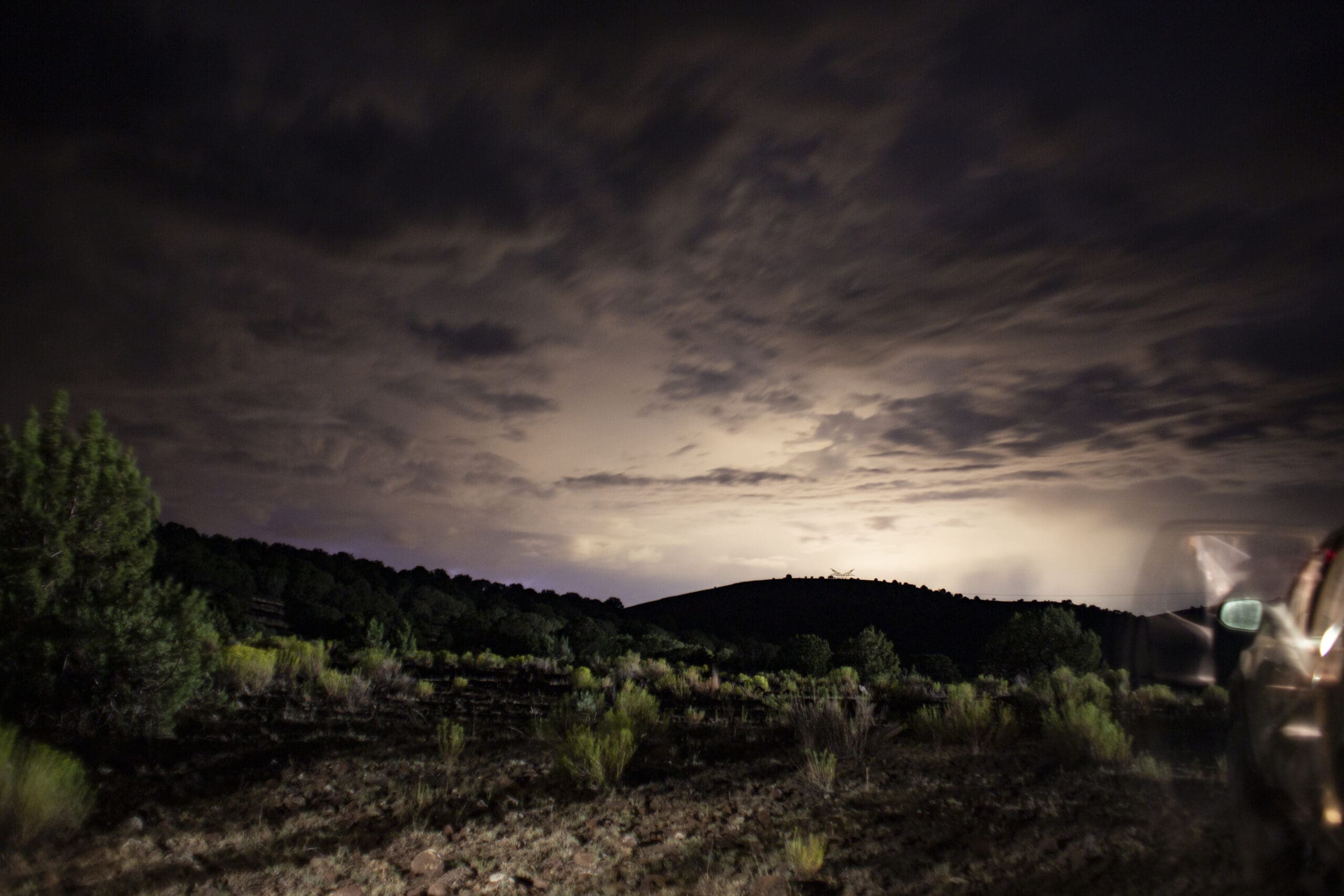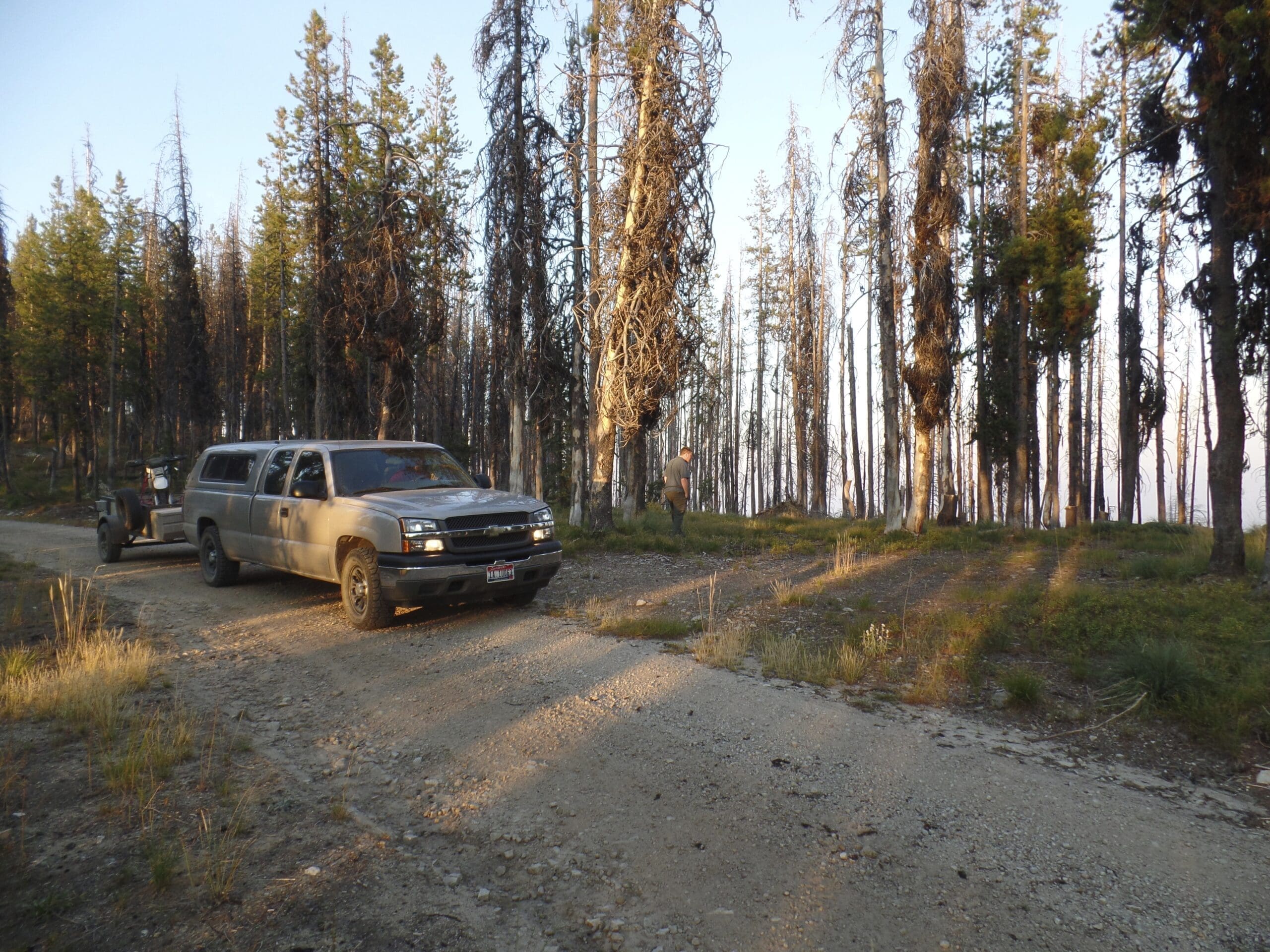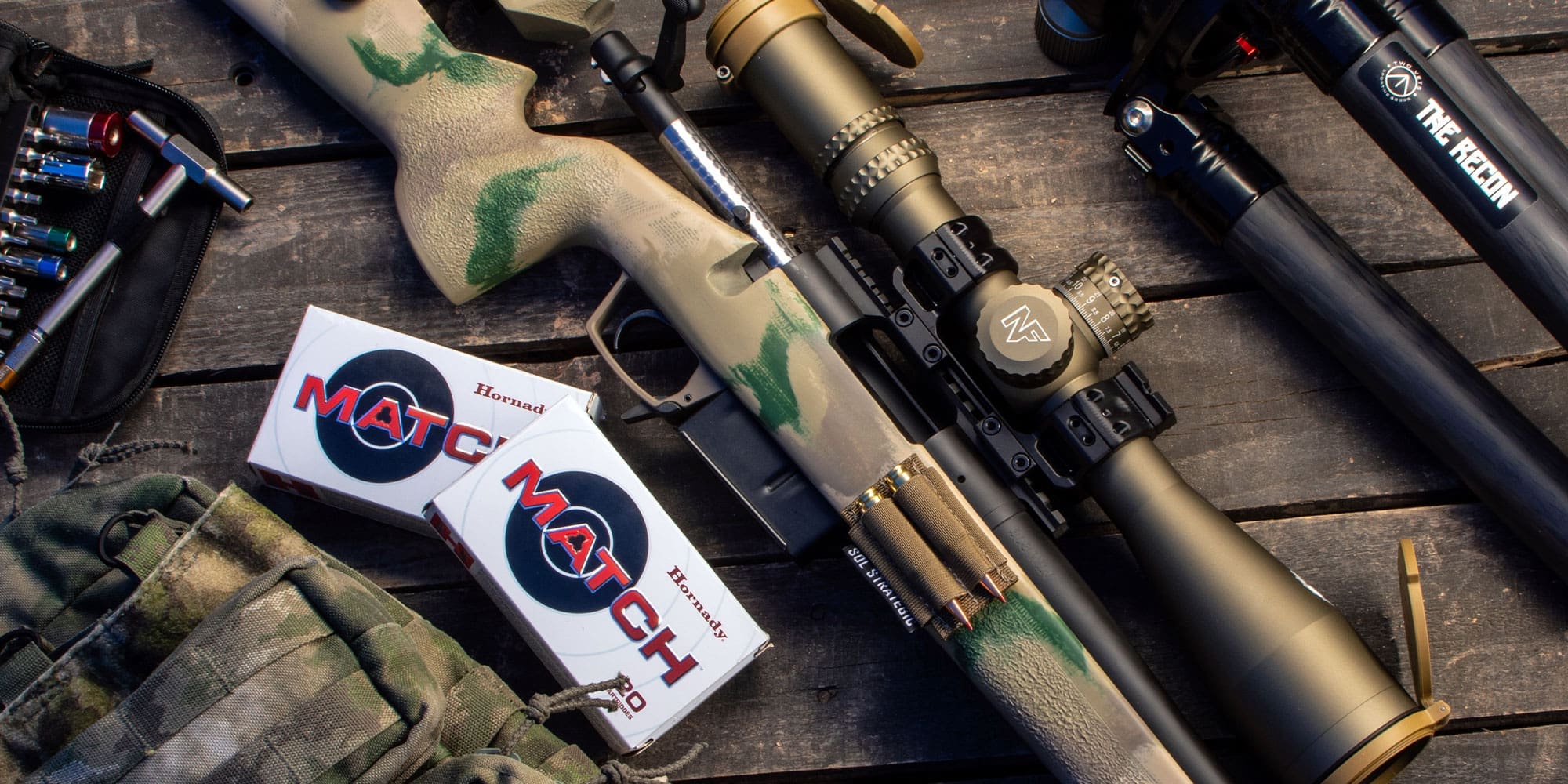
NOTICE: Certain links on this post may earn a commission for Western Hunter Magazine from Amazon or our other affiliate partners when you make a purchase. Thank you for your support.
Attack of the Killer (blank)
There's Plenty of Fun Things out There Ready To K.O. your Hunt...and Life!
In the sci-fi movie world, it’s always something you don’t expect that gets you - The Killer Tomato or The Attack of the 50-Foot Woman. I would never have seen that coming! In my experience, it’s the things you least expect that almost get you. It’s the unseen forces of nature or the simple mistakes that often have the largest consequences. Sure, predators seem more likely candidates for your demise, and they are, but I’ve assembled a list of my own personal close calls (brushes with death) so you can learn from my mistakes.
Attack of the Killer Clouds
I was just a kid, it was a late summer day, and my dad and I were in the backyard. We had just finished putting up a basketball hoop. A summer lightning storm rolled in and we stood there to watch. It was a blue sky above us when WHAM! A bolt of electricity stretched out across the sky and hit us with 300 million volts and about 30,000 amps. Compare that to a standard house electrical socket of 120 volts and 15 amps…this leads to a pretty bad day. Lightning often strikes more than three miles away from the center of the thunderstorm. It’s called, “bolts over the blue”. Even if there are no clouds close, you may still be in the strike zone.

Even though we weren’t hunting, the lesson is that more people get hit by lightning than you think. The odds of being hit are 1:3000, which sounds steep, but many of us put in for sheep tags every year with similar odds and “expect” to get drawn. Your odds of getting struck also dramatically increase when you’re unable to seek proper shelter or are in a backcountry situation during a lightning storm.
Worst-Case Scenario: The general recommendation by the National Lightning Safety Institute is to get inside. Thanks guys, but that isn’t happening in most hunting situations. If you can’t get inside a house or vehicle, then make yourself a lower probability target. Don’t be the highest object or take shelter near or under the highest object, including tall trees. Stay away from metal objects like fences. Get off of ridge tops and make your way to a lower ravine. Remember that tents offer no protection and may be more of a target than a barrier. If the lightning is getting close, the best position to be in is crouched in a ball with only your two feet touching the ground (avoid laying down, as more of your body is in contact with the ground and at risk for ground shock and electrocution).
Attack of Killer Bacteria
It was September in Montana; I had taken a nice bull elk with my bow and was planning on boiling the skull. I left the head out for a couple of days and it began to stink, so I decided to just saw the skull plate off. While doing this, I barely poked my thumb. It broke the skin but hardly bled. I washed my hands when the job was done and continued hunting with my friends.
A few days later, my thumb started to hurt. I pushed it off, thinking I must have been bit by a spider or something. A day later I woke up and my thumb was swollen, purple, and I could barely lift my arm. My armpit felt like it was hanging down. I knew something was really wrong.
I got a ride into a small-town emergency room where they confirmed that it was blood poisoning and it had reached my lymph nodes. Luckily, I got in quick enough so that antibiotics could work without having to remove any tissue. I got two days of antibiotic IV followed by two weeks of antibiotic pills every six hours. Talk about a pain in the butt! However, 100 years ago, the same infection would have made me lose a limb or have killed me.
Worst-Case Scenario: Blood poisoning can be pretty common, especially when you’re cutting on animals or other things where bacteria are present. If you cut yourself, take the time to clean the cut well and use antiseptic, even if it’s just a minor cut.
On wilderness trips, where an ER isn’t an option, it’s not a bad idea to have a doctor prescribe some sort of broad-spectrum antibiotic to keep in your first-aid kit. It can also come in handy for other problems encountered in the backcountry like E. coli or accidental ingestion of microbes in non-purified water.
Attack of Your Own Killer Body
My friend Brett and I were summer scouting for deer, walking along a river bottom. As we made it back to the truck, we both felt weird. My throat was starting to close and his eye was swelling up. We made it back and took Benadryl, which helped a little, but I was beginning to have some real trouble breathing. Brett’s left eye was now swollen shut and looked like a softball.
Since not being able to breath is kind of a big deal, I got a shot of epinephrine and adrenaline (often referred to as an Epi-pen). This is the same thing used if someone has a severe reaction to nuts or goes into anaphylactic shock after getting stung by a bee. This is where your body’s immune system attacks a substance that is normally harmless, causing an overreaction that can be fatal. I have no clue what plant we got into, but we both had a severe allergic reaction out of the blue.
Worst-Case Scenario: The most common and dangerous allergic reactions while hunting are from bee stings. Even if you aren’t allergic to bees, you may find yourself in a situation where someone you’re with is, and you could save their life if you carry an Epi-pen. If you don’t have an Epi-pen, it’s always good to at least have antihistamine for mild allergic reactions or to hopefully minimize major reactions).
If someone is stung by a bee, the first thing is to get the stinger out. Do this by scraping the stinger off the skin with something firm like your fingernail or a driver's license. You don’t want to squeeze the stinger, as it will release more toxins.
Next, inject them with the Epi-pen. This is an auto-injector. Take off the back portion safety cap and slam firmly into the leg. This will work through clothing. Then have them lay flat on their back with feet propped up 12 inches or so. This will help prevent shock and lets the medicine work. Don’t prop up their head, because it will make breathing more difficult. The Epi-pen also contains adrenaline. This gets your heart really pumping and makes the injection work fast. Their heart will beat like crazy, so it’s good to lie in this position for 15-20 minutes or more. I can tell you from experience that I tried to walk away before the adrenaline was done. I blacked out and hit the ground with a serious rush of blood to the head.
Even once the Epi-pen is administered, seek better medical attention. There is a possibility of a relapse later.
Attack of the Killer Forest
If a tree falls in the woods and you’re under it, does it smash you? The answer is yes. In western Montana, where I guide, a fire swept through a few years back, which makes it a dangerous place during a windstorm. There have been a least two occasions where very large trees have fallen extremely close to me.

Once, while I waited for a buck to stand for a 35-yard bow shot, a tree fell between us when a strong wind blew in. I got lucky it didn’t fall in my exact direction! The deer took off one way and I took off the other as I heard other trees falling in the burnt timber patch.
Worst-Case Scenario: Areas with big blow-downs are a visual sign that the trees aren’t stable. Most of the trees in the area probably have rotted roots or a weak hold in the ground. In strong winds, these trees rock back and forth until they fall. If you find yourself in this type of area and the wind picks up, take notice and try to stay away from the drop zone.
Attack of the Killer Icy River
Cold water can be a killer. I’ve seen it firsthand and hope I never do again. Cold water attacks the body swiftly. The blood in your limbs pulls away from your extremities to keep your vital organs operating, meaning that your arms and legs can become useless in very short order. Water around the freezing mark can lead to death in as little as 15 minutes. Even 50° water can be fatal in less than an hour.
On some hunts, river crossings and/or float trips are necessary and the norm, but you have to think of the worst-case scenario and how you’re going to get yourself out if things go bad. In most hunting scenarios, a river crossing is normally swift and cold, and the person doing the crossing is wearing a pack.
Worst-Case Scenario: Before crossing, find a place to cross where you have multiple exit points downstream in case you go in. Plan where you’re going to get to get out before you start to cross. If you’re wearing a pack, undo the waist belt and loosen the shoulder straps in case you have to make a quick escape. Place all your gear in the pack. You don’t want your rifle on your shoulder; it slips off easily and messes with your balance. I’ll even go so far as taking my binos off and stowing them. I don’t want anything that may snag the bottom!
When crossing in strong water, go with the current at a 45° angle to the other side, not against it. This puts your feet downstream and your pack behind you, which is a better position to recover.

Always cross with at least one wading stick and never attempt to cross too swift or too deep of water. Also, I recommend you cross with your boots on in any fast water. They provide stability and will keep you warmer in the long run. It’s natural to want to take your shoes off, but it’s imperative to keep them on!
If you get taken away in the current, get out as quickly as possible. Swim at an angle toward shore but with the current, not against it. The name of the game is “get to shore fast”. Your body (and your chances) will degrade quickly.
Attack of the Killer Buffalo Jump
One year I picked up some extra guide work in South Dakota in an area that resembled Montana’s Missouri Breaks. We had a pretty eventful day in a new area, with everyone taking their deer. We were heading back when a serious rainstorm rolled in and started dumping. I knew that the mud would be bad and the wash we came through on the road would be flooded. I opted not to get stuck and/or lose my new truck.
We decided to drive cross-country instead. I couldn’t see ten feet, but finally spotted a fence line that went up a steep hill, so I decided to follow it. I couldn’t see the ground in front of me because we were climbing. I saw the fence ended at the top of the hill, so I kept going, thinking that was the way out.
As I neared the top, I got a weird feeling and let off the gas. As I started to slow, the person in the passenger seat started yelling. Out his window was nothing but air below! It was the edge of a 100-foot drop and we were inches away from driving over it. I was about to know what a buffalo jump felt like for a buffalo.

Worst-Case Scenario: Use extra caution when driving off-road, especially when you have poor visibility! Don’t assume anything.
Attack of the Killer Flesh-Eating Fungus
If I’m not hunting in the spring, then I’m looking for sheds. Every once in a while, I’ll stumble across the Holy Grail - a winterkill. One day I found one (a bull elk), but unfortunately, someone else found it first and took the antlers. I was bummed, but I noticed it still had the ivories. Why not take them as a consolation prize? I pulled out my knife, cut one out, and then decided to leave the other one (it was decomposed, and I had my fill). I didn’t even think that the little scrape on my hand would be a problem.
Sure enough, three weeks later, a small ring formed on my right hand. It appeared as a patch of dry skin until it started to grow and quickly ate away all the skin and tissue, leaving a large nasty open sore. After getting some serious strength anti-fungal cream and steroid cream, it healed…over a month later.
Worst-Case Scenario: Leave dead things alone or wear gloves. It makes sense to me now, but snagging those ivories seemed like a good idea at the time. The process of decomposition can happen while you’re still alive…it’s not an enjoyable process.
Attack of the Killer Arrow
Treat every gun as a loaded gun. I’m overly cautious with firearms because, in my mind, there’s no such thing as too safe. I’ve guided hundreds of hunters, with varying levels of what “safe” means. I’ve noticed that most are not up to the standards I would think is safe, so I have no shame in speaking up.
In 11 years of guiding, I’ve never had a close call with a rifle or a rifle hunter, but I have almost been shot; not with a gun, but a bow. I was off to the side of a hunter who was drawing his bow. His draw weight was too heavy, and as he drew back, he pulled his arm way to the side and accidentally punched the trigger. It sent an arrow flying just below my hat brim. I could feel the air go by, and it scared the crap out of me.
Another time I had a hunter turn to ask me a question as we stalked an elk. He had an arrow nocked and stuck me right in the shoulder.
Worst-Case Scenario: Treat every bow like a loaded bow. Any weapon is dangerous and you should treat them as such. Just because you have a bow doesn’t mean you get to throw common sense out the window.
Attack of the Killer Zombie Deer
I’ve read enough “This Happened to Me” stories in Outdoor Life as a kid to know better. That was what was going through my head at the time. To make a long story short, the two guys I was with loaded up a deer that was not “100% dead” in the back of my truck. By 100%, I mean it was shot in the neck and had absolutely no reaction to anything but was not dead. Noticing this and thinking what a bad idea this was, I decided I would put the deer down with my knife.
Trouble was the rounded tip of my skinning knife wouldn’t go in past his hide. The second I tried to stab the deer he came to life - with both of us in the back of my truck (camper shell on). Not a great position to be in, trust me. There were hooves and antlers kicking and thrashing in every direction.
I managed to get in a position with the buck’s antlers on each side of my head and put the deer in a choke hold (this is not a joke). I felt terrible about what had transpired; it wasn’t fair to him. I wedged myself in the corner, got my feet in position, and kicked him out of the back, where I put him down.
Worst-Case Scenario: Never, under any circumstance, put a live deer in any vehicle. Watching the movie Tommy Boy should have been warning enough; it doesn’t turn out well!













